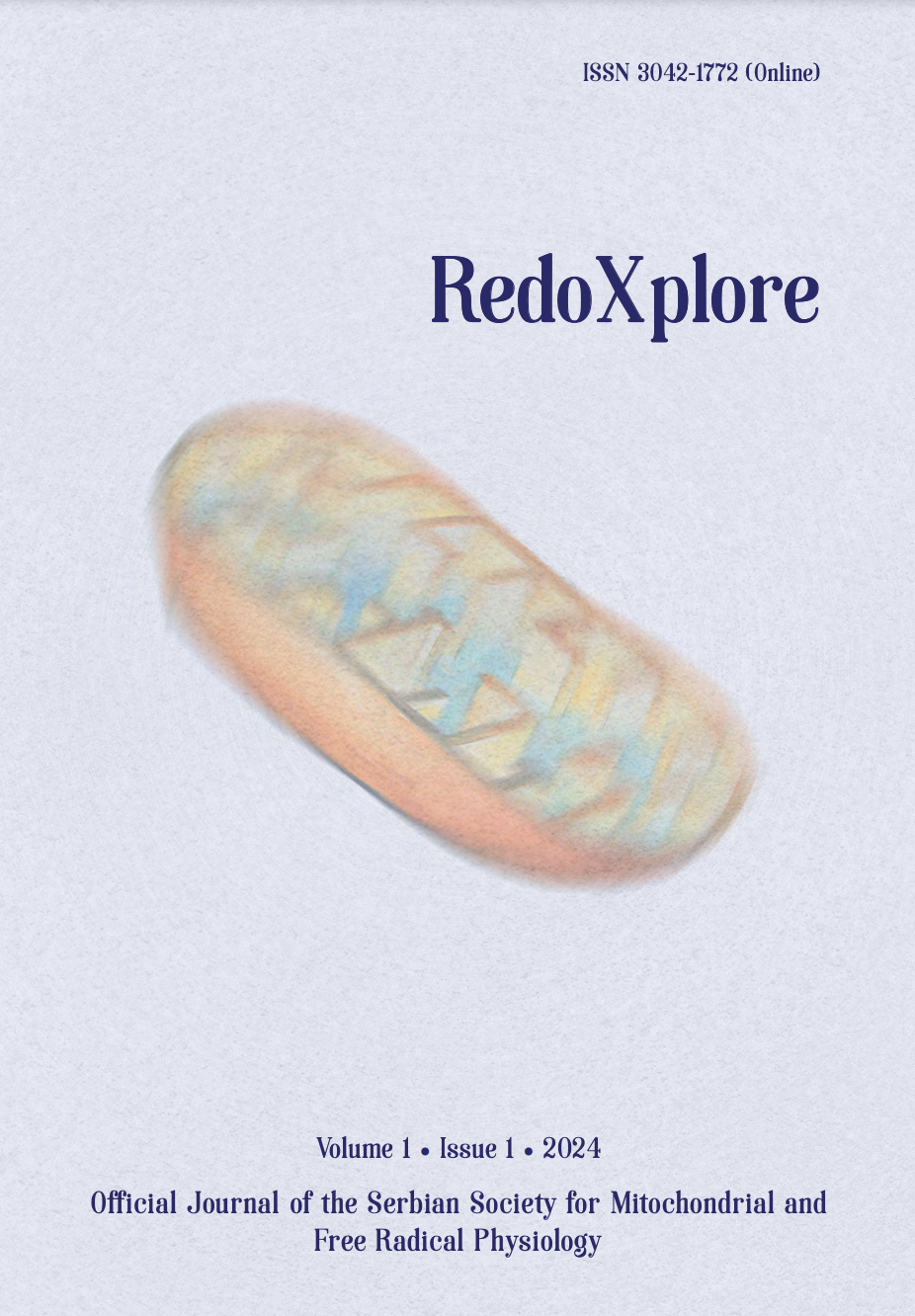
More articles from Volume 1, Issue 1, 2024
REDOX AND METABOLIC REPROGRAMMING OF BREAST CANCER CELLS AND ASSOCIATED ADIPOSE TISSUE - THE CORNERSTONES OF ADAPTIVE TUMOUR BEHAVIOUR
INSULIN MODULATES MITOCHONDRIAL STRUCTURAL AND FUNCTIONAL MOSAICISM IN BROWN ADIPOCYTES
NITRITE MITIGATES OXIDATIVE BURST IN ISCHEMIA/REPERFUSION IN BRAIN SLICES
NITRIC OXIDE, SUPEROXIDE AND PEROXYNITRITE – REDOX REGULATION OF THE CARDIOVASCULAR SYSTEM BY NITRO-OXIDATIVE STRESS AND S-NITROS(YL)ATION
DIETARY NITRATE AS PIVOT ON THE GUT MICROBIOTA-HOST REDOX COMMUNICATION
ROLE OF MITOCHONDRIA IN THE PHYSIOPATHOLOGY OF THE CARDIOMYOPATHY ASSOCIATED TO FRIEDREICH’S ATAXIA. STUDIES IN HUMAN iPS CELLS
Department of Physiology, Faculty of Medicine and Dentistry, University of Valencia , Valencia , Spain
Department of Physiology, Faculty of Medicine and Dentistry, University of Valencia , Valencia , Spain
Department of Physiology, Faculty of Medicine and Dentistry, University of Valencia , Valencia , Spain
Department of Physiology, Faculty of Medicine and Dentistry, University of Valencia , Valencia , Spain
Department of Physiology, Faculty of Medicine and Dentistry, University of Valencia , Valencia , Spain
Department of Physiology, Faculty of Medicine and Dentistry, University of Valencia , Valencia , Spain
Center for Biomedical Network Research on Rare Diseases (CIBERER), Carlos III Health Institute , Valencia , Spain
Department of Physiology, Faculty of Medicine and Dentistry, University of Valencia , Valencia , Spain
2Center for Biomedical Network Research on Rare Diseases (CIBERER), Carlos III Health Institute , Valencia , Spain
Editor: Bato Korac
Published: 29.08.2024.
Keynote lectures
Volume 1, Issue 1 (2024)
Abstract
Friedreich's ataxia (FRDA) (OMIM #229300, ORPHA95) is a rare hereditary disease with a prevalence of 1/20,000 to 1/50,000 in the European population. It is classified as a hereditary peripheral neuropathy of a sensory type, with autosomal recessive inheritance. This disease is caused by the deficiency of a mitochondrial protein called frataxin. Lack of expression of this protein produces accumulation of iron, alterations in the biogenesis of iron-sulfur clusters, failures in complexes I, II and III of the respiratory chain and in the activity of the aconitase enzyme, and a reduction in the biosynthesis of the heme groups. As a consequence, finally, an overload of ROS derived from the Fenton reaction occurs. Together with the movement impairment, 60% of FRDA patients suffer cardiomyopathy, which is the most common cause of death in these patients and has no clear explanation of its physiopathological cause. Two iPSC cell lines from FRDA patients with cardiomyopathy) and a control line were differentiated to ventricular cardiomyocytes in our lab. Both FRDA cell lines showed changes in heartbeat parameters, such as heart rate and amplitude when compared to the control cell line. Also, calcium homeostasis measured by immunofluorescence showed important differences when compared to the control cell line. RT-PCR analyses of miRNAs related to myocardial function also showed clear differences, especially for miR-323-3p and miR-142-3p. Using EM, we found differences in the mitochondrial size, shape and in mitochondrial cristae organization. These results also correlate with changes in the cardiomyocytes cytoskeleton and in the structure of the sarcomeres using confocal microscopy techniques. Our results showed the correlation between mitochondrial changes and the impairment in ventricular cardiomyocytes activity derived from FRDA’s iPS cells.
Citation
Copyright

This work is licensed under a Creative Commons Attribution-NonCommercial-ShareAlike 4.0 International License.
Article metrics
The statements, opinions and data contained in the journal are solely those of the individual authors and contributors and not of the publisher and the editor(s). We stay neutral with regard to jurisdictional claims in published maps and institutional affiliations.






